Rediff Business Desk
There was a time when one had to wait for months to get a Bajaj two-wheeler. The omnipresent Bajaj scooter and its 'Hamara Bajaj' advertisement struck the right chord with millions of Indians. But three months from now, Bajaj will bid farewell to scooters. Forever.
From selling over a 100,000 units every month, the company now manufactures only 1,000 scooters. Bajaj Auto which revolutionized the nation's scooter market and had a bevy of two-wheelers on offer, now sells just one scooter -- the 100-cc gearless Kristal. Bajaj's first scooter model 'Chetak' was launched in 1972 and remained its flagship model right until the 80s.The company stopped manufacturing the Chetak four years ago. It will stop production of Kristal by end of the current fiscal. The decision is in line with the global trend where bikes accounted for more than 70 per cent of the market. In India, scooters account for only about 12 per cent of the total two-wheeler market.
"Scooters did not sell according to our expectations. If we have to be a motorcycle specialist, we have to make a sacrifice," Bajaj Auto managing director Rajiv Bajaj said on Wednesday.
"One day, God willing, we will be the largest motorcycle company in the world. If we have to be a motorcycle specialist, we have to make sacrifice (in scooter segment)," he added. Bajaj said the company has a production capacity of 3 million bikes annually.
Here's a peek into Bajaj Auto's illustrious journey...
...
A peek into Bajaj Auto's illustrious journey
Image: Rahul Bajaj, the man behind the success of Bajaj Auto.The Beginning
The Bajaj Group is among the top 10 business houses in India. The group's flagship company, Bajaj Auto, is ranked as the world's fourth largest two- and three- wheeler manufacturer.
Founded in 1926 by the redoubtable Jamnalal Bajaj, the company's businesses range form automobiles (two-wheelers and three-wheelers), home appliances, lighting, iron and steel, insurance, to travel and finance. Jamnalal Bajaj was a close confidant and disciple of Mahatma Gandhi.
Being deeply involved with the Independence struggle, Jamnalal Bajaj did not get much time to spend on his newly launched business venture. His son, Kamalnayan Bajaj, at the age of 27, took over the reins of business in 1942.
Kamalnayan Bajaj consolidated the group and diversified it into various manufacturing activities. His son, Rahul Bajaj, took charge of the business in 1968. Under his leadership, the turnover of the Bajaj Auto has zoomed from Rs 7.2 crore (Rs 72 million) to Rs 4,616 crore (Rs 46.16 billion) over time. Bajaj's products now have a global market.
A peek into Bajaj Auto's illustrious journey
Image: Bajaj Scooters.Bajaj Auto was born in November 29, 1945 as Bachraj Trading Corporation Private Limited. It started off by selling imported two- and three-wheelers in India. In 1959, it obtained the license from the Government of India to manufacture two- and three-wheelers and it went public in 1960.
Bajaj Auto began producing its first two-wheelers in 1961 after bagging the Indian licensee for the making Vespa scooters. A number of new models were launched in the 1970s, including the three-wheeler goods carrier and Bajaj Chetak.
The Chetak, named after the legendary horse of Rajput warrior Rana Pratap, won the hearts of millions of Indians. It was an affordable vehicle for many who aspired to own a scooter. By 1977, the company managed to sell 100,000 vehicles in a single financial year.
In 1985, it started production at Waluj in Aurangabad. In 1986, production zoomed to 500,000 vehicles in a single financial year. In 1995, it rolled out its 10 millionth vehicle, and produced and sold 1 million vehicles in a year.
A peek into Bajaj Auto's illustrious journey
Image: Rajiv Bajaj, MD, Bajaj Auto.'You just can't beat a Bajaj,' was the company's marketing slogan. Ironically, that was not to be, as it was beaten by the entry of Japanese and Italian scooter companies in the early 1980s.
Today, Honda leads in the scooter segment with an over 55 per cent market share. Other players like TVS, Suzuki are also catching up.
Bajaj Auto, the then market leader in the geared scooter arena, started feeling the heat of the competition. This, coupled with rise in prices caused by rationalisation of sales tax, introduction of catalytic converters and rise in petrol prices, hit the company's sales badly.
In 2001, a year after Rajiv Bajaj (Rahul Bajaj's son) started actively participating in the business, he saw the company lose its market leadership. However, he transformed Bajaj from a scooter manufacturer to a hi-tech motorcycle maker in a bid to tackle the huge challenge posed by the competition and to garner more market share.
A peek into Bajaj Auto's illustrious journey
Image: Bajaj Pulsar.The Bajaj M-50 debuted in 1981. The new fuel-efficient, 50cc motorcycle was successful. There was a huge demand for this model.
Work on a new plant at Waluj, Aurangabad started in January 1984. The 1986-87 fiscal year saw the introduction of the Bajaj M-80 and the Kawasaki Bajaj KB100 motorcycles.
The company was making 500,000 vehicles annually. In 1986, Bajaj Auto entered into a technical alliance with Japan's Kawasaki Heavy Industries and produced a host of motorcycles, including the KB100, Boxer, Caliber 115 and the cruiser bike, Kawasaki Bajaj Eliminator.
During 2003-04, the company posted all-time high sales of 1.5 million two- and three-wheelers. In November 2007, Bajaj Auto acquired 14.5 per cent stake in KTM Power Sports AG (holding company of KTM Sportmotocycles AG).
The two companies have signed a cooperation deal, by which KTM will provide the know-how for joint development of the water-cooled four-stroke 125 and 250 cc engines, and Bajaj will take over the distribution of KTM products in India and some other Southeast Asian nations.
The year 2008 saw the demerger of Bajaj Auto Ltd into three separate corporate entities - Bajaj Finserv Ltd (BFL), Bajaj Auto Ltd (BAL), and Bajaj Holdings and Investment Ltd (BHIL).
A peek into Bajaj Auto's illustrious journey
Image: Bajaj Sunny.Bajaj motorcycle sales grew by 84 per cent in November 2009. Its exports stood at 98,521 units in November 2009, the highest ever for the company. Bajaj Auto had sold 131,681 units in November last year, Bajaj Auto Ltd (BAL) said in a statement.
BAL attributed the jump in its monthly sales to its newly launched 100cc Discover DTS-Si and the Pulsar. It sold 94,265 units of its new 100cc Discover DTS-Si and 50,153 units of the Pulsar.
The total two-wheeler sales during the month also increased by 83.24 per cent to 2,42,648 units compared with 1,32,421 units in the same period a year ago, it added.
BAL's exports went up by 46.18 per cent to 98,521 units in November from 67,397 units a year ago. This was the highest ever monthly export reported by the company.
The total vehicle sales of the company last month stood at 2,76,759 units compared to 1,59,747 units in the same period a year ago, up by 73.25 per cent, the statement said.
The company reported a rise of 24.83 per cent in its three-wheeler sales during November at 34,111 units, against 27,326 units during the same month last year.
BAL said its commercial vehicle sales continued to grow across various segments, including in-city, sub-urban and goods carrier categories, but did not give any details.
The company will launch an all new sub-150cc Pulsar on December 9 as part of its effort to push up its growth rate from January next year, it added.
Its sales in the last financial year declined by 22.4 per cent to 1.4 million units, while the industry recorded a growth of 2.6 per cent, with market leader Hero Honda reporting a growth of 12 per cent at 3.64 million units.
Bajaj's bikes
Pulsar 150 DTS-i
Discover 135 DTS-i
Discover DTS-Si
Platina 125 DTS-Si
Platina 100 CC
XCD 135 DTS-Si
Kristal DTS-i
Avenger 200 DTS-i
A peek into Bajaj Auto's illustrious journey
Image: Bajaj Sunny Spice.1960-1970 - Vespa 150 - Under the licence of Piaggio of Italy
1971 - three-wheeler goods carrier
1972 - Bajaj Chetak
1976 - Bajaj Super
1977 - Rear engine autorickshaw
1981 - Bajaj M-50
1986 - Bajaj M-80, Kawasaki Bajaj KB100
1990 - Bajaj Sunny
1991 - Kawasaki Bajaj 4S Champion
1994 - Bajaj Classic
1995 - Bajaj Super Excel
1997 - Kawasaki Bajaj Boxer, Rear engine diesel autorickshaw
1998 - Kawasaki Bajaj Caliber, Bajaj Legend, India's first four-stroke scooter, Bajaj Spirit
2000 - Bajaj Saffire
2001 - Eliminator, Bajaj Pulsar
2003 - Caliber115, Bajaj Wind 125, Bajaj Pulsar
2004 - Bajaj CT 100, New Bajaj Chetak 4-stroke with Wonder Gear, Bajaj Discover DTS-i
2005 - Bajaj Wave, Bajaj Avenger, Bajaj Discover
2006 - Bajaj Platina
2007 - Bajaj Pulsar-200 (Oil Cooled), Bajaj Kristal, Bajaj Pulsar 220 DTS-Fi (Fuel Injection) , XCD 125 DTS-Si
2008 - Bajaj Discover 135 DTS-i - sport (Upgrade of existing 135 model)
2009 - Bajaj Pulsar 135(December 9), Bajaj XCD 135 cc , Bajaj Pulsar 220 DTS-i , Bajaj Discover 100 DTS-Si.

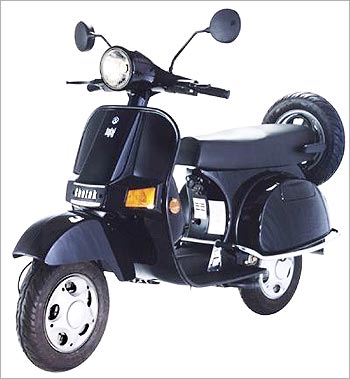
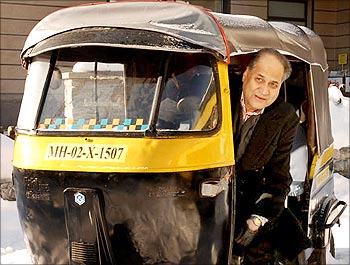
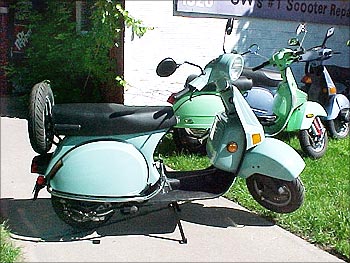
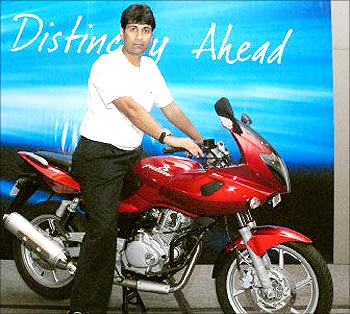


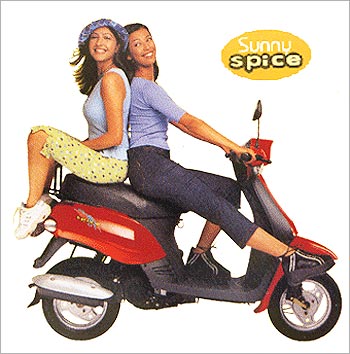
article